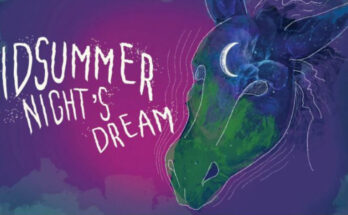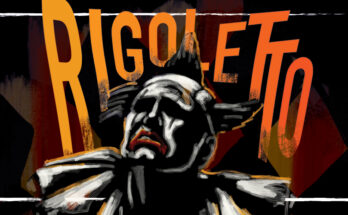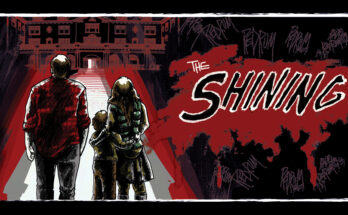In November of 1832, an excited Parisian audience gathered at the Théâtre-Français for the premiere of a new piece by the brilliant playwright Victor Hugo, titled Le Roi s’amuse (The King Amuses Himself). Hugo’s drama relates a gripping tale of the tortured hunchback Triboulet, jester to King Francis I, who is driven mad upon the discovery of the rape of his daughter Blanche by his libertine master. Accounts of the evening are all over the map and remain controversial; for when the company arrived for the second presentation, they found a posted notice prohibiting further performances, as the French censors had detected unflattering allusions to King Louis-Philippe. Hugo filed a lawsuit, and though his battle was unsuccessful it won him an estimable reputation as a proponent of free speech.
Little could Hugo have realized that his theatrical failure would inspire one of the greatest of operatic masterpieces, Giuseppe Verdi’s Rigoletto—a creation that not only proved to be a milestone in Verdi’s compositional arc but signaled an important change in the course of Italian opera.
Rigoletto appeared in 1851, a period that found the operatic art form poised between the cumulative traditions of bel canto—“beautiful singing” achieved through the long-established structures of the Italian ottocènto form—and rumblings of the future schools of verismo and sophisticated music drama. Verdi had already won recognition as Italian opera’s heir apparent, and while his earlier “galley years” compositions, as he called them, are thrilling, one senses in them an artist still reaching to find his own unique voice. What that voice was to be assertively evidenced itself with the creation of three middle-period masterpieces: first Rigoletto, then Il trovatore, and La traviata, which find him evolving beyond received convention towards a goal of musical/dramatic consolidation.
It is unclear when Verdi first encountered Hugo’s play, but it is mentioned in his records as early as 1844. That same year, Verdi and his preferred librettist Francesco Maria Piave had scored a notable success at the Teatro La Fenice in Venice with Ernani, based on another Hugo vehicle. Thus, when La Fenice tendered a contract in 1850 for a new opera, the prospect of capitalizing on that former accomplishment seemed an act of fate.
Le Roi’s treatise of political power run amok naturally appealed to Verdi, a passionate Italian patriot. In addition, throughout his career the composer demonstrated a particular empathy for characters who functioned outside the center of accepted society.
In Hugo’s Triboulet,Verdi discerned an opportunity to present a character unlike anything heretofore seen on the operatic stage. He urged Piave to “Find someone of influence to get us permission to do Le Roi s’amuse. Don’t go to sleep, give yourself a good shake, do it at once.”
Verdi’s urgency no doubt centered on his fear that the Italian censors would prohibit the subject matter, and indeed the proposal was initially disallowed. In the end, a member of the Director of the Ordine Pubblico tactfully suggested that if the locale and names in Hugo’s play were changed (and the king demoted to a less important position) the project just might slip through. Thus, the King of France became a minor duke of Mantua, Blanche was renamed Gilda, and Triboulet—and the title of the opera itself—became Rigoletto.
Rigoletto’s 1851 premiere was a smash hit. Italian opera had rarely achieved such an effective conflation of glorious sound and dramatic truth. The piece is largely grounded by two musical forces; a series of father/daughter duets which form the effective heartbeat of theopera, and a repeated motif representing Monterone’s foreboding curse. In a very few places, one finds Verdi slipping into convention. The “stealth chorus” underscoring Gilda’s abduction is a device the composer had previously employed in Macbeth and would hereafter abandon. All else focuses on opera’s future.
One need only compare Rigoletto with Verdi’s earlier Hugo-inspired effort Ernani to appreciate the composer’s extraordinary growth. While the earlier opera, for all its beauty, presents us with stereotypical characters of unidirectional motivation, Rigoletto fields an amazingly complex level of emotional portraiture.
Here we have a protagonist who is neither hero nor villain, a man equally driven by vengeance and paternal affection. The Duke is perhaps more conventional yet is capable of both ineffable charm and the most callous indifference. Gilda is perhaps the most interesting of all; she is naïve and makes poor choices—but she is also the ethical center of the narrative and the only character with a consolidated moral compass. Her demise is a “principled death” (something she shares with another Hugo-inspired character, Les Misérables’ Jean Valjean). When viewed through that lens, her fate emerges as the willful destruction of morality itself by the surrounding social/political system.
Rigoletto’s characters might best be viewed as archetypes. If Gilda can be seen as the embodiment of innocence, morality, and social order, and the Duke as a representation of corruptive power in the ruling class, Rigoletto himself demonstrates the impotent and dangerous rage of the disenfranchised common man. These are universal dynamics of humanity that transcend specific time, or place.
Victor Hugo set his drama in 15th century France; Verdi, his adaptation in Renaissance Verona. Tomer Zvulun and designer Erhard Rom have brought the action forward to the equally oppressive world of fascist Italy in the early 20th century.
Verdi was fiercely proud of Rigoletto, in his later correspondence often calling it “my best opera.” For over 170 years, Rigoletto has held a prominent place among the most beloved operas ever composed, and with it an important corner was turned in the development of the lyric theatre. Italian opera would never be the same.
Photo: Rigoletto pleads for Gilda’s safe return. Photo by Lynn Lane/Houston Grand Opera



